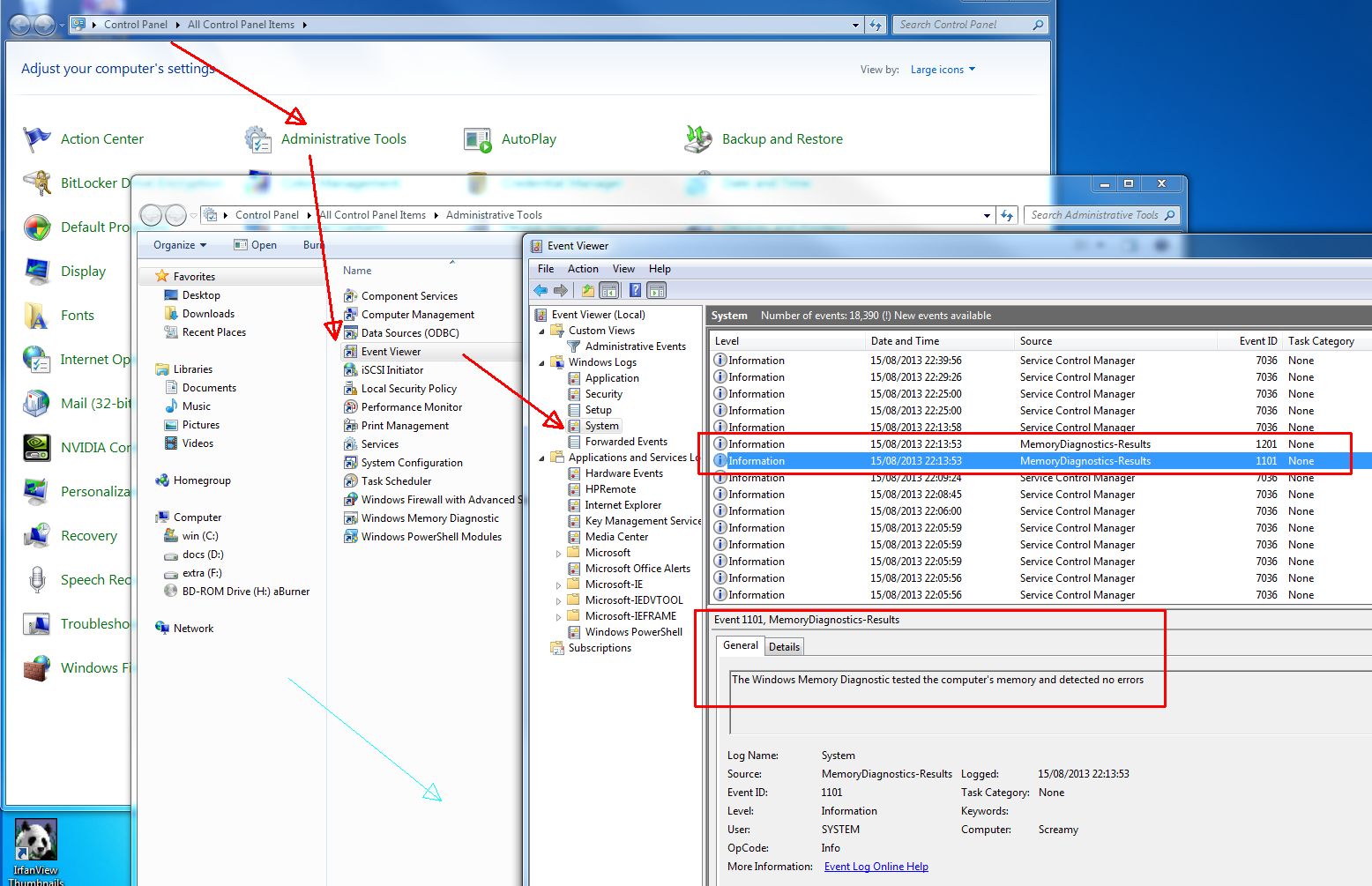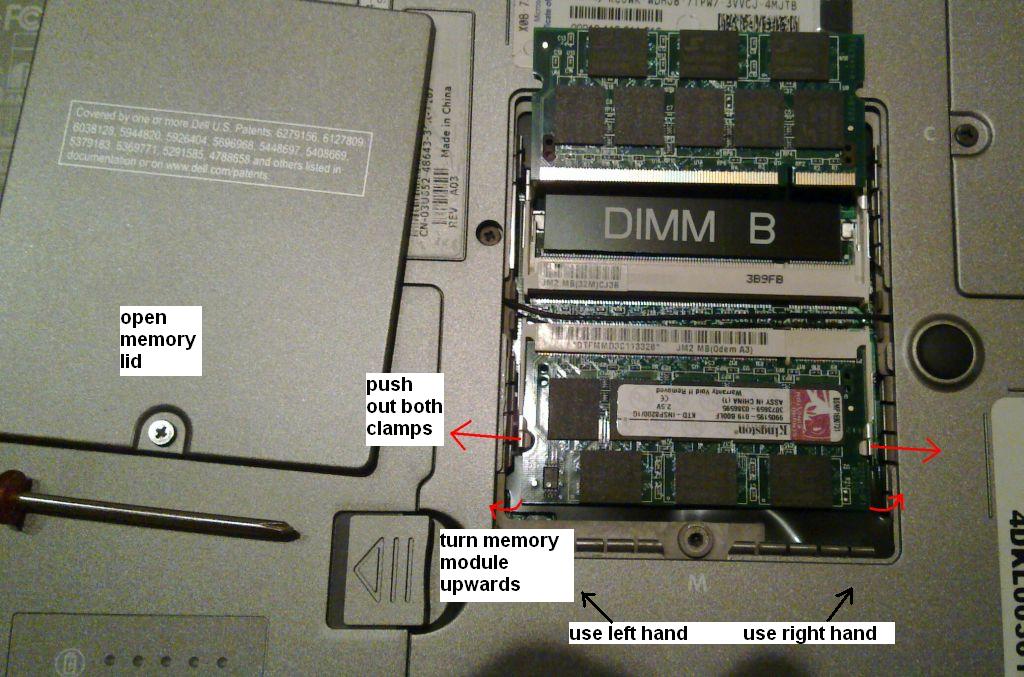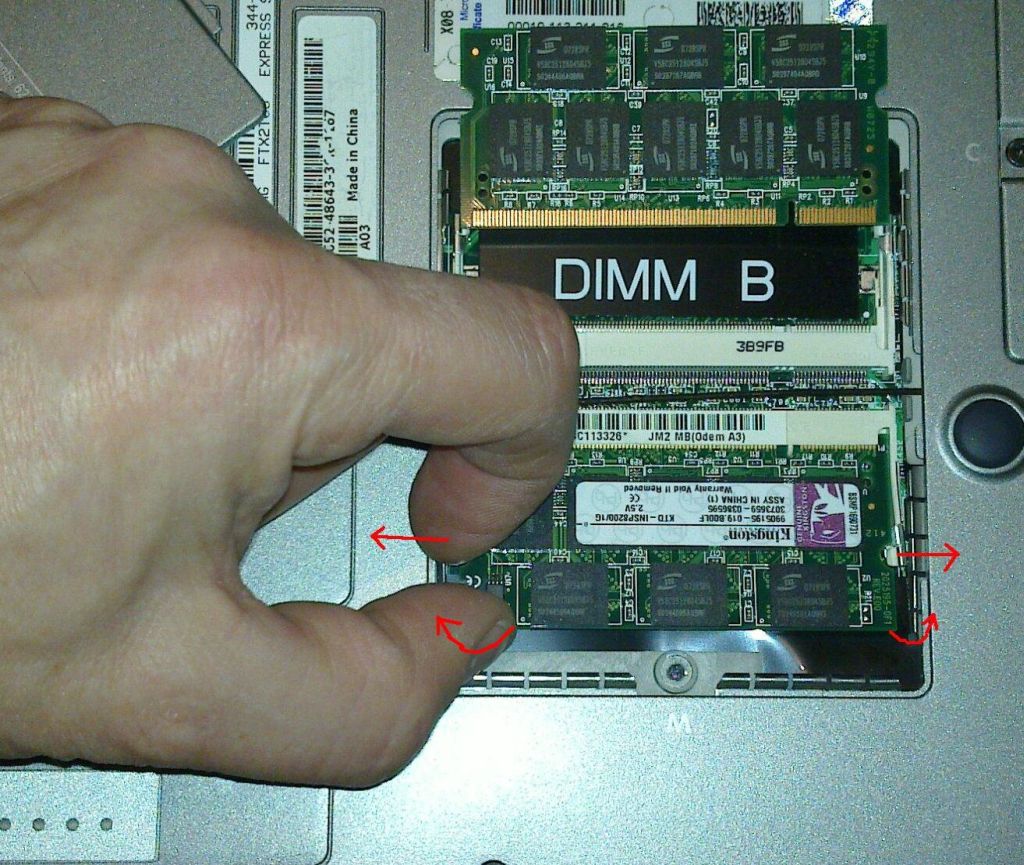updated mar2015
RAM has different type, speed and latency:
- TYPE is mostly how many times data is read (or written) during 1 clock cycle; DDR transfers data 2 times per clock cycle, DDR2 does it 4 times, DDR3 8 times.
- there are special types for servers and workstations, that have built-in error correction; these are ECC types, and have different "RANKS" that you have to be aware of! Normally single rank and dual rank can be used on the same motherboard and in the same memory channel, but since dual rank has more chips and thus normally higher capacitive load they have to mounted in the slots farthest away from the CPU.
- there are also even more special types for servers, called "ECC REGISTERED". Those types have an extra buffer between the channel bus and the memory chips, which makes it possible to use a high amount of RAM blocks. They will only work in hi-end machines like the epic HP-Z800, and cannot be mixed with non-registered types.
- SPEED is number of bits or Bytes (1 Byte is 8 bits) per second.
- LATENCY is how much time there has to be between subsequent read/write cycles.
RAM versions.
| type | data rate | name | speed |
| SD | 100MHz | PC100 | 100x64/8=800MB/s |
| SD | 133MHz | PC133 | 133x64/8=1066MB/s |
| RDR (RAMBUS) | 2x400=800MHz | PC800 | 800x16/8=1600MB/s |
| DDR | 2x133=266MHz | PC2100 | 266x64/8=2100MB/s |
| DDR | 2x167=333MHz | PC2700 | 333x64/8=2700MB/s |
| DDR | 2x200=400MHz | PC3200 | 400x64/8=3200MB/s |
| DDR2 | 4x133=533MHz | PC2-4200 | 533x64/8=4264MB/s |
| DDR2 | 4x167=667MHz | PC2-5300 | 667x64/8=5333MB/s |
| DDR2 | 4x200=800MHz | PC2-6400 | 800x64/8=6400MB/s |
| DDR3 | 8x100=800MHz | PC3-6400 | 800x64/8=6400MB/s |
| DDR3 | 8x133=1066MHz | PC3-8500 | 1066x64/8=8528MB/s |
| DDR3 | 8x167=1333MHz | PC3-10700 | 1333x64/8=10664MB/s |
| DDR3 | 8x200=1600MHz | PC3-12800 | 1600x64/8=12800MB/s |
| DDR3 | 8x233=1866MHz | PC3-14900 | 1866x64/8=14928MB/s |
| DDR4 | 8x333=2666MHz | PC4-21300 | 2666x64/8=21333MB/s |
| DDR4 | 8x400=3200MHz | PC4-25600 | 3200x64/8=25600MB/s |
not finished yet
Testing your RAM for errors.
When there is something wrong with your RAM, you can experience many weird crashes.
In that case you can do a test of your RAM.
There is a nice program called "Memtest86", that you can burn on CD, boot with, and run a long test.
The official version also has a free edition, that can be found here: link.
In W7, there is a built-in memory test tool in the toolbox.
You can use it when you click F8 during boot of windows > Repair my Computer > Memory Diagnostics
The biggest challenge of this tool is, that you only can see the results via "Event Viewer".
The following screenshot shows how to do it, starting in ControlPanel:

upgrading RAM.
First, check what RAM you have by using CPU-Z or SIW see here
You would like to upgrade with the same sort of RAM, and it is normally a good idea also to check with the motherboard vendor what the recommended types are.
Then, locate the memory in your PC.
| changing laptop RAM |
 |
Use both hands (only shown for left hand here):
 |
When placing the new RAM, be sure to push the module completely into the socket before pushing down into the clamps.
Not finished yet